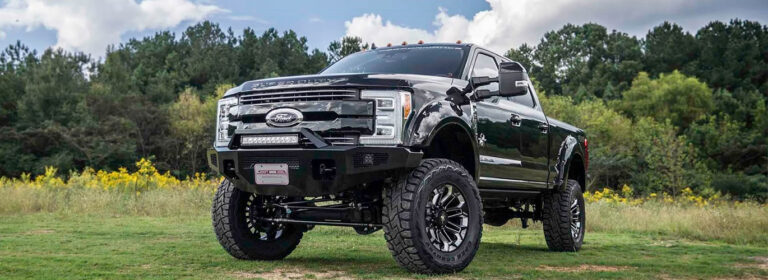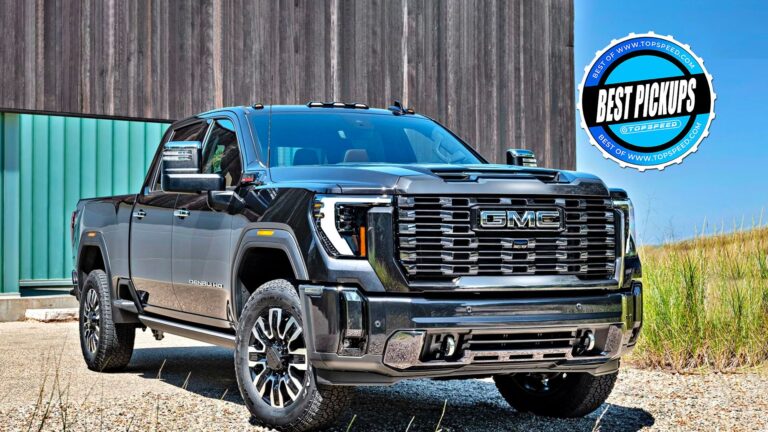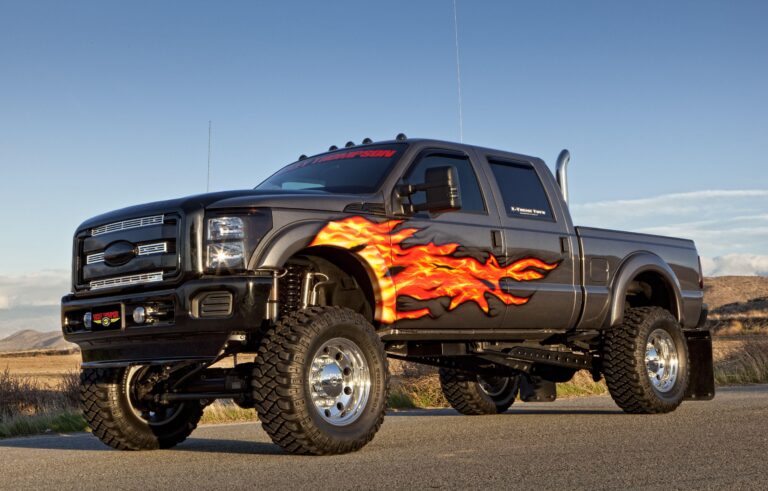All GM Cars: A Comprehensive Guide to General Motors’ Diverse Automotive World
All GM Cars: A Comprehensive Guide to General Motors’ Diverse Automotive World cars.truckstrend.com
General Motors (GM) stands as a titan in the global automotive industry, a name synonymous with American motoring innovation and diversity. For over a century, "All GM Cars" has encompassed a staggering array of vehicles, from humble compacts to colossal trucks, luxurious sedans, and groundbreaking electric vehicles. It’s not just a collection of cars; it’s a legacy of engineering, design, and cultural impact that has shaped how millions travel, work, and live. This comprehensive guide delves into the expansive universe of GM vehicles, exploring its rich history, diverse brands, technological advancements, and what the future holds for this automotive powerhouse.
The Enduring Legacy of General Motors: A Century of Innovation
All GM Cars: A Comprehensive Guide to General Motors’ Diverse Automotive World
The story of General Motors began in 1908 when William C. Durant founded the company, quickly acquiring Buick and then rapidly expanding to include Oldsmobile, Cadillac, and Oakland (which later became Pontiac). Durant’s vision was to create a diversified automotive empire, offering a car for every purse and purpose. This foundational strategy led to GM’s meteoric rise, challenging and eventually surpassing Ford as the world’s largest automaker for much of the 20th century.
GM’s "golden age" saw the introduction of iconic models like the Chevrolet Bel Air, Cadillac Eldorado, and Pontiac GTO, defining American car culture with their distinctive styling, powerful engines, and widespread accessibility. The company was at the forefront of automotive innovation, introducing features like electric self-starters, synchronized transmissions, and safety cages.
However, the late 20th and early 21st centuries brought significant challenges, including global competition, economic downturns, and shifts in consumer preferences. This culminated in the dramatic 2009 bankruptcy and subsequent government-backed restructuring. Emerging leaner and more focused, GM shed several brands (Pontiac, Saturn, Hummer, Oldsmobile, Saab) to concentrate on its core strengths and invest heavily in future technologies. Today, GM is a revitalized entity, keenly focused on electrification, autonomous driving, and sustainable mobility, ensuring its continued relevance in a rapidly evolving industry.
The Diverse Portfolio: GM’s Core Brands Today
"All GM Cars" today primarily refers to vehicles produced under its four core brands in North America, each meticulously crafted to cater to distinct market segments:
-
Chevrolet: The Heartbeat of America
Chevrolet remains GM’s most ubiquitous brand, known for its broad appeal, reliability, and value. From practical sedans like the Malibu to versatile SUVs like the Equinox and Traverse, and the legendary Silverado pickup truck, Chevrolet offers something for nearly everyone. It also boasts high-performance icons like the Corvette and Camaro, alongside pioneering electric vehicles such as the Bolt EV and EUV, and the upcoming Silverado EV. Chevrolet vehicles are designed for durability, widespread accessibility, and a balance of performance and practicality. -
GMC: Professional Grade
GMC (General Motors Truck Company) focuses exclusively on trucks, SUVs, and commercial vehicles, positioning itself as a more premium and capable alternative to Chevrolet’s offerings. While sharing platforms with Chevy models (e.g., Sierra with Silverado, Yukon with Tahoe), GMC vehicles often feature more upscale interiors, distinctive styling, and enhanced capability or unique features, particularly in their Denali luxury trims. Models like the Canyon, Sierra, Terrain, and Yukon cater to consumers who demand robustness, utility, and a touch of refinement. The electric Hummer EV also falls under the GMC umbrella, pushing the boundaries of electric off-road performance. -
Buick: Accessible Luxury
Buick has historically been known for its quiet, comfortable, and sophisticated vehicles. While its sedan lineup has largely been retired in North America, Buick now focuses primarily on a range of elegant SUVs: the Encore GX, Envision, and Enclave. Buick vehicles emphasize a smooth ride, quiet cabins, premium materials, and user-friendly technology, offering a refined driving experience without the top-tier price tag of a full luxury brand. They appeal to buyers seeking comfort, style, and a sense of understated elegance.
-
Cadillac: The Standard of the World
Cadillac represents the pinnacle of GM’s luxury and performance offerings. Known for its bold design, cutting-edge technology, and powerful engines, Cadillac aims to compete directly with European and Asian luxury marques. Its lineup includes sophisticated SUVs like the XT4, XT5, XT6, and the iconic Escalade, alongside high-performance V-series models. Cadillac is also at the forefront of GM’s electrification strategy with stunning new EVs like the Lyriq and the ultra-luxury, hand-built Celestiq, showcasing GM’s vision for future mobility and design.
Beyond the Engine: GM’s Technological Innovations
Modern GM cars are not just about horsepower and torque; they are technological marvels. GM has consistently invested in R&D to enhance safety, connectivity, and performance.
- Powertrains for Every Need: While still producing efficient internal combustion engines (from turbocharged fours to powerful V8s), GM is rapidly transitioning to an all-electric future. The Ultium Platform is GM’s modular EV architecture, designed to power a wide range of vehicles with varying battery sizes and motor configurations, promising impressive range, performance, and charging speeds.
- Advanced Driver-Assistance Systems (ADAS): GM vehicles offer a comprehensive suite of ADAS features, including automatic emergency braking, lane-keeping assist, adaptive cruise control, and blind-spot monitoring.
- Super Cruise: A standout innovation, Super Cruise is GM’s hands-free driver-assistance system that allows for truly hands-free driving on compatible highways. It represents a significant step towards autonomous driving, offering enhanced comfort and reduced driver fatigue.
- Infotainment & Connectivity: Modern GM vehicles feature intuitive infotainment systems like Chevrolet MyLink, GMC Infotainment System, Buick Infotainment System, and Cadillac User Experience (CUE). These systems offer large touchscreens, smartphone integration (Apple CarPlay, Android Auto), built-in Wi-Fi hotspots, and over-the-air updates, keeping vehicles connected and current.
- OnStar: A pioneering in-vehicle safety and security system, OnStar provides emergency services, navigation, remote vehicle diagnostics, and stolen vehicle assistance, adding an extra layer of peace of mind for drivers.
Choosing Your GM Vehicle: Practical Advice and Actionable Insights
Navigating the vast selection of "All GM Cars" requires careful consideration. Here’s practical advice to help you make an informed decision:
- Define Your Needs and Budget: Before looking at specific models, determine what you need in a vehicle. How many passengers? What kind of cargo? What’s your daily commute like? What’s your realistic budget, including not just the purchase price but also insurance, fuel, and maintenance?
- Research the Brands: Understand the core philosophy of Chevrolet, GMC, Buick, and Cadillac. Are you looking for value and broad utility (Chevy), rugged capability with premium touches (GMC), quiet luxury and comfort (Buick), or cutting-edge technology and ultimate prestige (Cadillac)?
- Consider New vs. Used: New GM vehicles come with warranties and the latest features. Certified Pre-Owned (CPO) GM vehicles offer peace of mind with extended warranties and thorough inspections, often at a significant discount. Private used car sales can offer even greater savings but come with higher risk.
- Test Drive Thoroughly: Never buy a car without a comprehensive test drive. Drive on various road types (city, highway, rough patches) to assess ride comfort, handling, acceleration, braking, and visibility. Pay attention to interior ergonomics and infotainment system ease of use.
- Evaluate Total Cost of Ownership (TCO): Beyond the sticker price, consider fuel efficiency, insurance costs, expected maintenance, and depreciation. Electric GM vehicles, for example, might have a higher initial cost but lower "fuel" and maintenance expenses over time.
- Read Reviews and Compare: Consult reputable automotive reviews (e.g., Consumer Reports, Edmunds, Car and Driver) and compare similar models across GM brands and competitors. Look for consistency in reliability ratings and owner satisfaction.
- Understand Technology Features: Familiarize yourself with features like Super Cruise, advanced safety systems, and infotainment options. Ensure they align with your preferences and driving style.
- Negotiate Smartly: Be prepared to negotiate the price. Research average transaction prices for your desired model and trim. Don’t forget to discuss financing options, trade-in values, and any available incentives.
All GM Cars: Representative Pricing Table (Current Models)
It’s impossible to provide a comprehensive price list for "all GM cars" ever produced, given the vast number of models spanning over a century. Instead, the table below offers a representative selection of current GM vehicles across its main brands, providing approximate starting MSRPs (Manufacturer’s Suggested Retail Price) to give you an idea of the diverse price points.
| Brand | Model Name | Vehicle Type | Starting MSRP Range (Approx. USD) | Key Features/Notes |
|---|---|---|---|---|
| Chevrolet | Trax | Subcompact SUV | $21,500 – $27,000 | Entry-level, stylish, fuel-efficient, urban-friendly |
| Chevrolet | Equinox | Compact SUV | $27,000 – $35,000 | Popular family SUV, balanced performance & value |
| Chevrolet | Malibu | Mid-size Sedan | $26,000 – $32,000 | Traditional sedan comfort, economical |
| Chevrolet | Silverado 1500 | Full-size Pickup Truck | $37,000 – $65,000+ | Versatile workhorse, wide range of trims & engines |
| Chevrolet | Corvette Stingray | Sports Car | $68,000 – $80,000+ | Mid-engine supercar performance, iconic American sports car |
| Chevrolet | Bolt EV / EUV | Electric Hatchback/SUV | $26,500 – $33,000 | Affordable, accessible EV with good range |
| GMC | Terrain | Compact SUV | $30,000 – $40,000 | Upscale alternative to Equinox, "Professional Grade" styling |
| GMC | Sierra 1500 | Full-size Pickup Truck | $39,000 – $70,000+ | Premium truck, Denali ultimate luxury options available |
| GMC | Yukon | Full-size SUV | $60,000 – $85,000+ | Large family hauler, capable, luxurious interior |
| GMC | Hummer EV Pickup/SUV | Electric Supertruck | $97,000 – $110,000+ | Extreme off-road capability, unique "CrabWalk" feature |
| Buick | Encore GX | Subcompact SUV | $26,000 – $32,000 | Entry-level luxury, nimble, comfortable |
| Buick | Envision | Compact SUV | $36,000 – $45,000 | Quiet cabin, smooth ride, premium features |
| Buick | Enclave | Mid-size SUV | $45,000 – $55,000+ | Three-row luxury SUV, spacious interior, refined drive |
| Cadillac | XT4 | Compact Luxury SUV | $39,000 – $48,000 | Entry-level Cadillac SUV, sporty and agile |
| Cadillac | Escalade | Full-size Luxury SUV | $84,000 – $110,000+ | Iconic luxury SUV, advanced tech, imposing presence |
| Cadillac | Lyriq | Electric Luxury SUV | $58,000 – $70,000+ | Cadillac’s first all-electric SUV, sleek design, Ultium power |
| Cadillac | Celestiq | Ultra-Luxury EV Sedan | $340,000+ (estimated) | Hand-built, bespoke, pinnacle of Cadillac luxury & tech |
Disclaimer: All prices are approximate starting MSRPs for the base models and do not include destination charges, taxes, options, or dealer markups. Prices are subject to change and vary by region and trim level. This table represents a selection of current GM vehicles and is not exhaustive.
Frequently Asked Questions (FAQ) about All GM Cars
Q1: What brands are currently owned by General Motors?
A1: In North America, GM’s core brands are Chevrolet, GMC, Buick, and Cadillac. Globally, GM also operates brands like Wuling and Baojun (joint ventures in China) and formerly owned Opel/Vauxhall (sold to Stellantis).
Q2: Is GM going all-electric?
A2: GM has stated an ambitious goal to transition to an all-electric vehicle lineup by 2035 for light-duty vehicles. They are investing heavily in EV technology, particularly their Ultium battery and motor platform, to achieve this.
Q3: What is Super Cruise?
A3: Super Cruise is GM’s advanced hands-free driver-assistance system. It allows drivers to operate their vehicles without hands on the steering wheel on over 400,000 miles of compatible roads across the U.S. and Canada, requiring driver attention monitoring.
Q4: Where are GM cars manufactured?
A4: GM has manufacturing plants across the globe, including numerous facilities in the United States, Canada, Mexico, China, and other countries. The specific origin of a GM vehicle depends on the model and the market it’s intended for.
Q5: Are GM cars reliable?
A5: Like any large automaker, reliability can vary by model and year. However, GM has made significant strides in improving vehicle quality and reliability over the past decade. Many of its models consistently receive good ratings from independent automotive consumer organizations.
Q6: What is the Ultium Platform?
A6: Ultium is GM’s modular electric vehicle platform, encompassing its proprietary battery cells, battery packs, and drive units. It’s designed to be highly flexible, allowing GM to produce a wide range of EVs—from compact cars to large trucks and SUVs—with varying performance and range capabilities, all built on a common architecture.
Conclusion
"All GM Cars" represents a journey through over a century of automotive evolution. From its pioneering spirit and market dominance to its challenging restructuring and current forward-looking vision, General Motors has consistently adapted to the changing landscape of mobility. Today, its diverse portfolio of Chevrolet, GMC, Buick, and Cadillac vehicles offers a compelling choice for nearly every driver, blending traditional strengths with cutting-edge innovations. As GM accelerates its transition towards an all-electric, autonomous future, it continues to shape not just the automotive industry, but the very way we move, reinforcing its enduring relevance and status as a cornerstone of global transportation.




